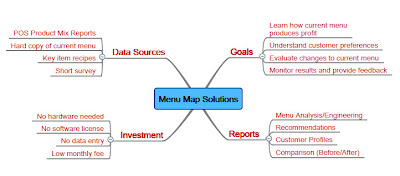Why do many companies fail to achieve their goals? Most never commit the necessary resources to finish the job.
So how do restaurants go about the chore of pricing menu items? Some take the current menu prices and add a few points to cover CPI inflation. Others check the local competition and bring their menu prices in line with the neighbors. Some use a factor between 2 and 5. They multiply the expected food cost by this factor to arrive at the menu price.

Do you know what it costs to produce the items on your menu? If you have standard recipes, do you use recent commodity prices or expected future costs?
Profitable extras are tougher to sell in today's market. Some restaurants simply do not want their customers to spend too much per cover. They fear their competition will get the business the next time the guest decides to dine out.
I believe most restaurant operators can significantly increase profit through prudent menu analysis. A new breed of business professionals have adopted the Six Sigma methodology. These people use detailed Process Maps to illustrate how a product or transaction is processed. Our Menu Map Solution incorporates classic menu analysis and engineering techniques along with a focus on the current menu and operation.
We can help you properly price menu items, properly position the high potential entrees and find ways to improve production and service of these menu items.
Please visit our Menu Map Solutions website to request more information.